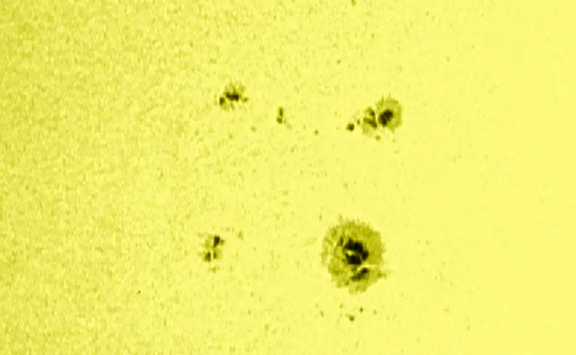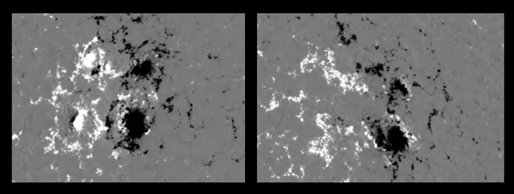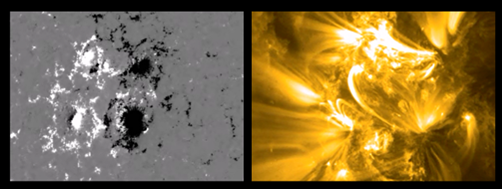Sunspot groups come in a variety of shapes, and it is well known that such regions occasionally team up to form an eye-catching configuration. This was the case late November and the beginning of December, when NOAA 1623 and 1625 formed a nice square of sunspots.
NOAA 1623 rounded the east limb as a mature group on 27 November, while NOAA 1625 started to form a few degrees to the north of NOAA 1623 on 29 November, developing fairly quickly. By 30 November, both groups were about as long as they were separated from each other, forming a nice square. The square's side measured over 7 heliographic degrees, corresponding to about 85.000 km or 7 Earth diameters.

A white light movie (SDO/AIA 4500) shows the evolution of both groups as they transited the solar disk (27 November – 10 December). Notice that the square was just a temporary configuration, as both sunspot groups continued to evolve independently, gradually decaying. This can also be seen in the magnetograms (SDO/HMI), where the magnetic flux starts to disappear in the trailing part of both regions (white part, i.e. positive "outgoing" magnetic polarity). This corresponds to the disappearance of the sunspots, and by 9 December, NOAA 1625 was reported to have "died on disk".

Both groups produced 8 small C-flares each, most of them on 29 November: 6 by NOAA 1625 and 5 by NOAA 1623. Though both active regions developed separately, one can see in the SDO/AIA 171 part of the movie that there is an occasional magnetic link between the trailing part of NOAA 1625 (white, positive magnetic polarity) and the leading part of NOAA 1623 (black, negative polarity).

 |
 |





